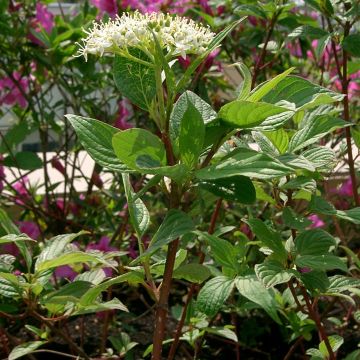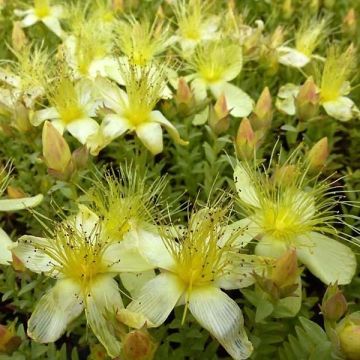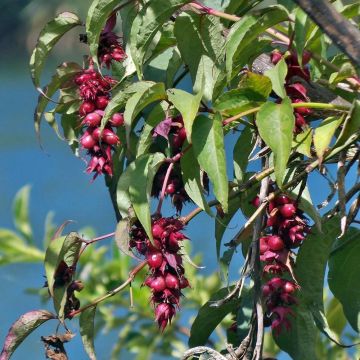

Leonotis leonurus


Leonotis leonurus
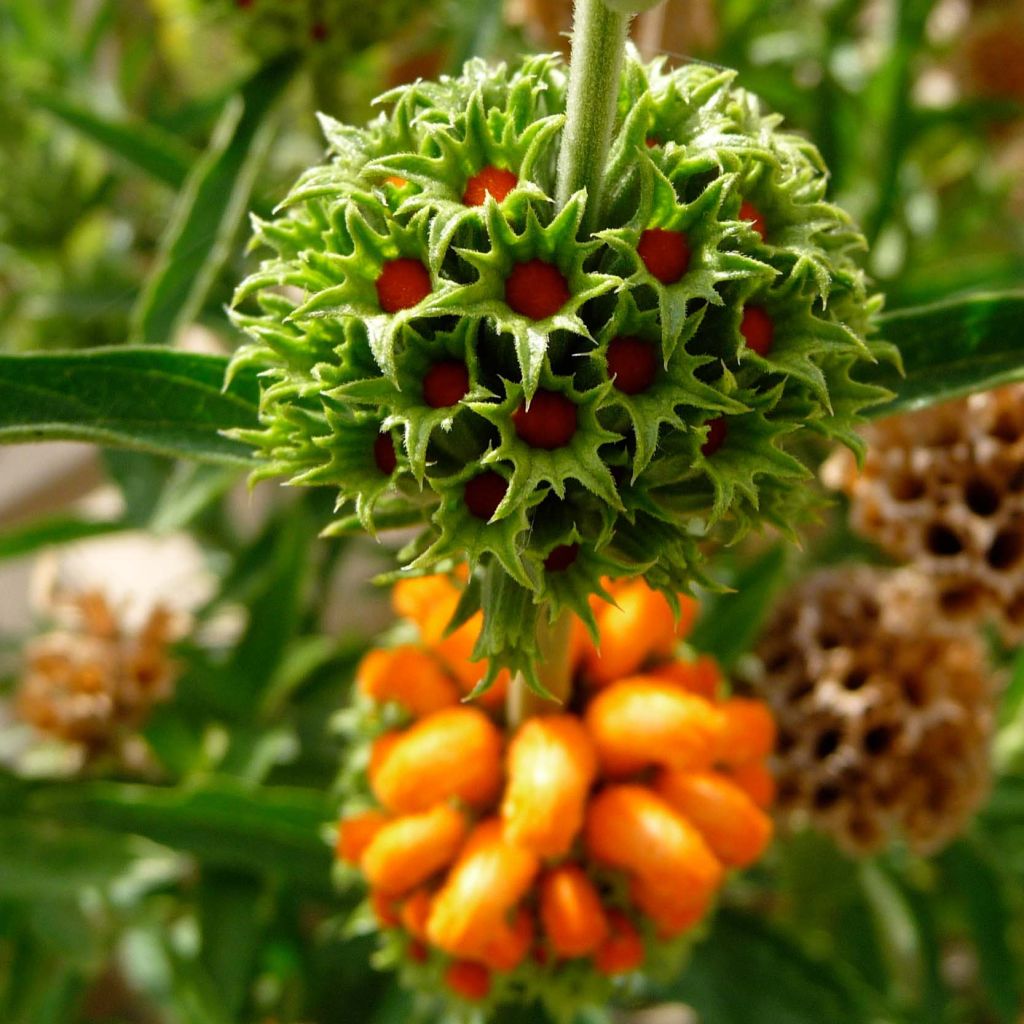

Leonotis leonurus
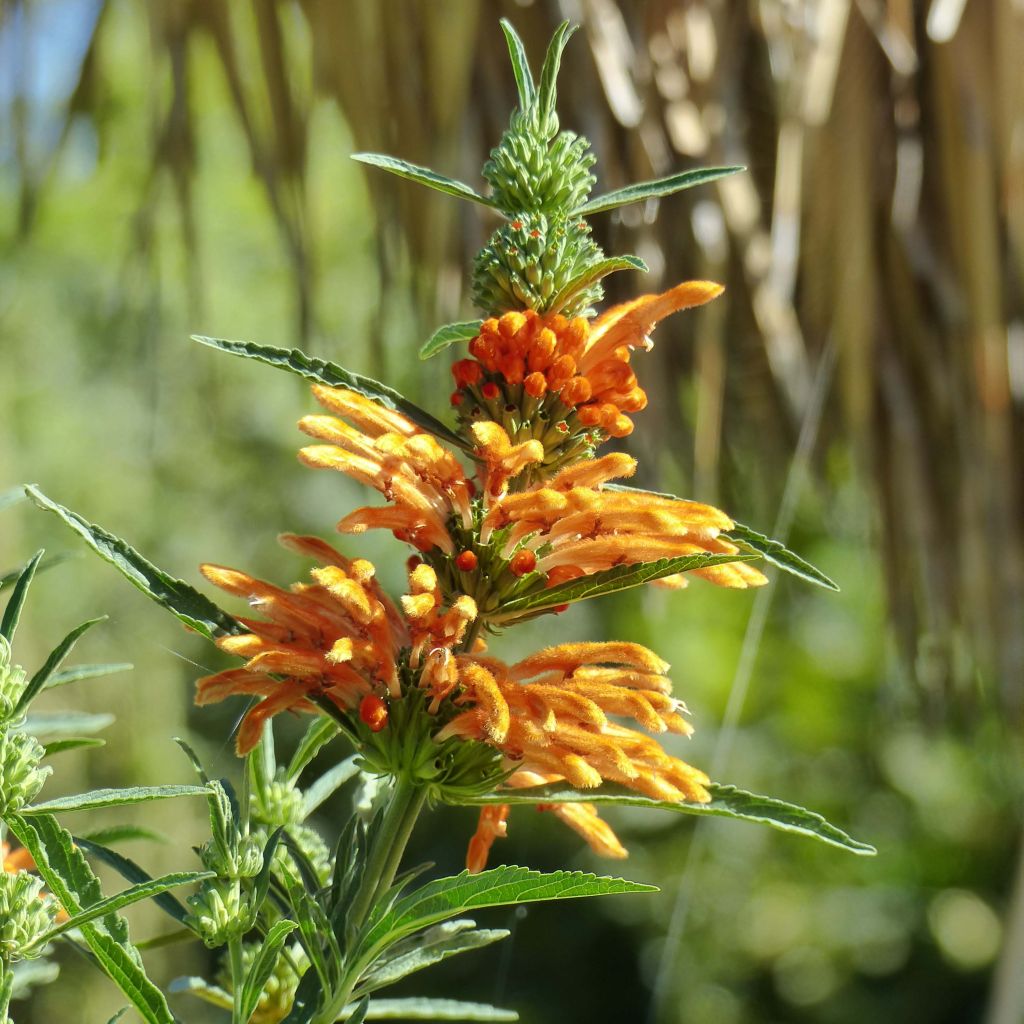

Leonotis leonurus
Leonotis leonurus
Leonotis leonurus
Wild Dagga, Lion's Tail, Lion's Ear
This item cannot be shipped to the selected country
Delivery charge from €5.90
Delivery charge from €5.90
Delivery to Corse prohibited
More information
Schedule delivery date,
and select date in basket
This plant carries a 24 months recovery warranty
More information
We guarantee the quality of our plants for a full growing cycle, and will replace at our expense any plant that fails to recover under normal climatic and planting conditions.
From €5.90 for pickup delivery and €6.90 for home delivery
Express home delivery from €8.90.
From €5.90 for pickup delivery and €6.90 for home delivery
Express home delivery from €8.90.
Delivery to Corse prohibited: UE law prohibits the import of this plant from mainland France to Corse as part of the fight against Xylella fastidiosa. Please accept our sincere apologies.
More information
Does this plant fit my garden?
Set up your Plantfit profile →
Description
Leonotis leonurus, sometimes called Lion's tail, is a superb perennial plant with a woody base originating from the sunny plains of South Africa. It is interesting for its orange flowering, as original as it is spectacular, which can be enjoyed from summer until the first frosts, of a rare colour for summer-flowering shrubs. At the end of the current year's stems appear tubular and villous flowers, bright orange, arranged in tiered crowns. This cousin of Phlomis proves to be more hardy than one might think: in a sheltered situation, it can survive brief frosts of around -12°C. Depending on the region, it will be grown in open ground or in large pots to be sheltered over winter.
Leonotis leonurus (synonym Phlomis leonurus) belongs to the family of Lamiaceae, like thyme and sage. In nature it is found in prairies, at the edge of woods and on rocky slopes of the Cape region in South Africa. Local populations also call it 'wild dagga' and smoke its leaves for their reputed euphoric properties. The Lion's tail has naturalised in California, Mexico, the Caribbean and Australia, but also on the French Riviera and the Atlantic coast: this plant easily restarts from the stump if frost has destroyed the aerial parts.
This fast-growing plant has a habit reminiscent of Phlomis. It is actually a large perennial with a lignified base and annual herbaceous stems that can also be grown as an annual in our less favourable climates. Rather erect at the beginning of the season, the Leonitis forms a large clump of leafy stems that widen, or even sag over the months: at maturity, it reaches about 1.50 m (5 ft) in height and 1.20 m (4 ft) in spread in European gardens. On the Mediterranean coast it can reach 2 m (6.5 ft) in all directions.
The villous square sectioned stems become lignified at the base. They bear deciduous or semi-evergreen leaves depending on the climate. They are entire, lanceolate, long and narrow and roughly dentate, measuring 10 cm (4 in) long and 2 cm (0.8 in) wide. These leaves are rough, villous on the underside, avocado green finishing butter yellow and slightly aromatic when bruised.
The flowering takes place from July-August until the first frosts. If the soil is very dry in summer, the plant will flower as soon as the rains return, from September to November. The current year's stems produce a succession of whorls (or crowns) of bilabiate tubular and villous flowers of a colour intermediate between pumpkin and apricot. These crowns of flowers unfold in a spectacular way: the orange villous buds surrounded by their pale green calyx bloom by lengthening up to 5 cm (2 in) long, while bending towards the ground, forming astonishing flamboyant umbrellas. Several 'stages' of flowers thus follow one another until the frosts come.
Leonotis leonurus is a very vigorous plant, not very thirsty, whose only real enemy is severe frosts. It likes being by the sea, but also inland in a sheltered situation. You can grow it in dry gardens or in a large exotic bed, but also in a pot on a very sunny terrace or balcony. Its orange flowering, like its habit, may seem difficult to pair with in the garden: however, one can imagine beautiful combinations with a Salvia guaranitica with its almost black flowers, olearias covered with small white daisies, an Euryops chrysanthemoides or even with the silver foliage of bushy artemisias which enhance all bright colours. On the terrace or in the garden, place the Leonotis near a Cape Plumbago in azure blue or white, an agapanthus, or not far from a beautiful grass with feathery flowering like the Miscanthus Yaku Jima for the contrast of shapes and colours. Also include in original cut flower bouquets, taking advantage of its flower-covered stems, from which you have removed the leaves.
Report an error about the product description
Leonotis leonurus in pictures
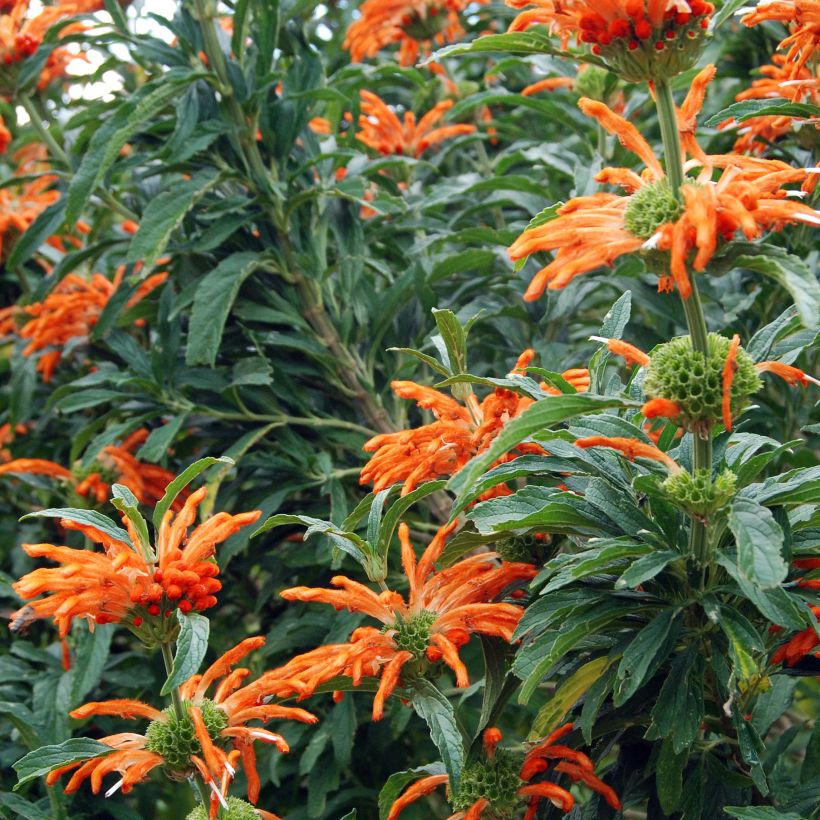



Plant habit
Flowering
Foliage
Botanical data
Leonotis
leonurus
Lamiaceae
Wild Dagga, Lion's Tail, Lion's Ear
South Africa
Other Shrubs A to Z
Planting and care
In open ground:
Leonotis leonurus is preferably planted in the spring, or in early autumn depending on the climate. It likes a very sunny site sheltered from wind and cold, for example against a south-facing wall. Plant it in light and fertile, fresh to dry, well-drained, even slightly alkaline soil. It is a plant that tolerates summer drought well once established, but prefers slightly fresh soil to flower abundantly in summer. This plant can be uprooted in the autumn to spend the winter in a pot sheltered from severe frosts, then put back in the open ground in the spring. After flowering, in autumn, prune all stems down to 30-40 cm (12-16 in) from the ground. Protect the stump with a good mulch. If the stems are destroyed by a cold winter, cut them at the end of winter: the plant will grow back from the stump down to -12°C (10.4 °F) in porous soil. Leonotis leonurus has few enemies in open ground. In a greenhouse it can be attacked by red spiders, whiteflies, and scale insects.
In a pot:
Use a rich and draining potting mix, composed of 1/3 garden soil, 1/3 leaf compost and 1/3 vermiculite or river sand. Water 2 to 3 times a week in summer, allowing the soil to dry on the surface between waterings. Fertilise the plant with a "specialist flowering plants" liquid fertiliser every 3 weeks during the growing period, or push in a slow-release fertiliser stick. Prune the stems after flowering. Bring your pot into a cold greenhouse or conservatory for the winter. Space out watering in winter.
Planting period
Intended location
Care
-
, onOrder confirmed
Reply from on Promesse de fleurs
Summer-flowering shrubs
Haven't found what you were looking for?
Hardiness is the lowest winter temperature a plant can endure without suffering serious damage or even dying. However, hardiness is affected by location (a sheltered area, such as a patio), protection (winter cover) and soil type (hardiness is improved by well-drained soil).

Photo Sharing Terms & Conditions
In order to encourage gardeners to interact and share their experiences, Promesse de fleurs offers various media enabling content to be uploaded onto its Site - in particular via the ‘Photo sharing’ module.
The User agrees to refrain from:
- Posting any content that is illegal, prejudicial, insulting, racist, inciteful to hatred, revisionist, contrary to public decency, that infringes on privacy or on the privacy rights of third parties, in particular the publicity rights of persons and goods, intellectual property rights, or the right to privacy.
- Submitting content on behalf of a third party;
- Impersonate the identity of a third party and/or publish any personal information about a third party;
In general, the User undertakes to refrain from any unethical behaviour.
All Content (in particular text, comments, files, images, photos, videos, creative works, etc.), which may be subject to property or intellectual property rights, image or other private rights, shall remain the property of the User, subject to the limited rights granted by the terms of the licence granted by Promesse de fleurs as stated below. Users are at liberty to publish or not to publish such Content on the Site, notably via the ‘Photo Sharing’ facility, and accept that this Content shall be made public and freely accessible, notably on the Internet.
Users further acknowledge, undertake to have ,and guarantee that they hold all necessary rights and permissions to publish such material on the Site, in particular with regard to the legislation in force pertaining to any privacy, property, intellectual property, image, or contractual rights, or rights of any other nature. By publishing such Content on the Site, Users acknowledge accepting full liability as publishers of the Content within the meaning of the law, and grant Promesse de fleurs, free of charge, an inclusive, worldwide licence for the said Content for the entire duration of its publication, including all reproduction, representation, up/downloading, displaying, performing, transmission, and storage rights.
Users also grant permission for their name to be linked to the Content and accept that this link may not always be made available.
By engaging in posting material, Users consent to their Content becoming automatically accessible on the Internet, in particular on other sites and/or blogs and/or web pages of the Promesse de fleurs site, including in particular social pages and the Promesse de fleurs catalogue.
Users may secure the removal of entrusted content free of charge by issuing a simple request via our contact form.
The flowering period indicated on our website applies to countries and regions located in USDA zone 8 (France, the United Kingdom, Ireland, the Netherlands, etc.)
It will vary according to where you live:
- In zones 9 to 10 (Italy, Spain, Greece, etc.), flowering will occur about 2 to 4 weeks earlier.
- In zones 6 to 7 (Germany, Poland, Slovenia, and lower mountainous regions), flowering will be delayed by 2 to 3 weeks.
- In zone 5 (Central Europe, Scandinavia), blooming will be delayed by 3 to 5 weeks.
In temperate climates, pruning of spring-flowering shrubs (forsythia, spireas, etc.) should be done just after flowering.
Pruning of summer-flowering shrubs (Indian Lilac, Perovskia, etc.) can be done in winter or spring.
In cold regions as well as with frost-sensitive plants, avoid pruning too early when severe frosts may still occur.
The planting period indicated on our website applies to countries and regions located in USDA zone 8 (France, United Kingdom, Ireland, Netherlands).
It will vary according to where you live:
- In Mediterranean zones (Marseille, Madrid, Milan, etc.), autumn and winter are the best planting periods.
- In continental zones (Strasbourg, Munich, Vienna, etc.), delay planting by 2 to 3 weeks in spring and bring it forward by 2 to 4 weeks in autumn.
- In mountainous regions (the Alps, Pyrenees, Carpathians, etc.), it is best to plant in late spring (May-June) or late summer (August-September).
The harvesting period indicated on our website applies to countries and regions in USDA zone 8 (France, England, Ireland, the Netherlands).
In colder areas (Scandinavia, Poland, Austria...) fruit and vegetable harvests are likely to be delayed by 3-4 weeks.
In warmer areas (Italy, Spain, Greece, etc.), harvesting will probably take place earlier, depending on weather conditions.
The sowing periods indicated on our website apply to countries and regions within USDA Zone 8 (France, UK, Ireland, Netherlands).
In colder areas (Scandinavia, Poland, Austria...), delay any outdoor sowing by 3-4 weeks, or sow under glass.
In warmer climes (Italy, Spain, Greece, etc.), bring outdoor sowing forward by a few weeks.




































